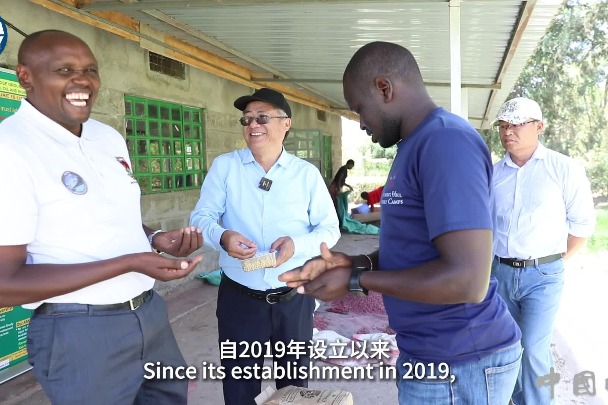Chinese wisdom, solutions contribute to global anti-malarial fight

The World Malaria Day was celebrated on April 25. China successfully extracted artemisinin from artemisia annua and developed it into a medicine in 1972. To date, artemisinin is still a global anti-malarial tool and artemisinin-based combined therapy is still the most effective cure for malaria. According to the statistics of the World Health Organization (WHO), artemisinin has saved millions of lives and cured more than 100 million people annually across the world, especially in developing countries. As a gift from traditional Chinese medicine (TCM) to the world, the use of artemisinin continues to make positive contributions to global health.

Malaria is a disease caused by parasite that threatens people's lives. Statistics showed 241 million people were affected by malaria in 2020, higher than 227 million in 2019. About 627,000 people died from malaria in 2020, 12 percent more than the 558,000 deaths in 2019.
Africa is the region most severely hit by malaria across the world. In 2020, about 95 percent of global malaria cases and 96 percent of the deaths caused by malaria were in Africa, and children under 5 years old accounted for 80 percent of total malaria-caused deaths in Africa.
Artemisinin brought hope to the global fight against malaria. According to the 2021 World Malaria Report published by the WHO, the artemisinin-based combined therapy is the most effective way to cure malaria for mankind up to now. Artemisinin, with fast efficiency, little side effect and low prices, has saved millions of lives. Since the WHO promoted artemisinin medicine as the priority choice in anti-malarial practices across the world in 2000, about 240 million people in sub-Saharan Africa have benefited from the artemisinin-based combined therapy, among which 1.5 million people were saved from deaths. Pedro Alonso, director of the Global Malaria Program of WHO, said that the anti-malaria research work of Chinese scientist Tu Youyou's team was extraordinary, and its contribution was tremendous.

China's success in the anti-malarial fight contributed to the development of global health system and building of a community of health for all. After 70 years of unremitting efforts, China has achieved remarkable achievement of zero malaria case per year now from 30 million cases every year in the 1940s. China was certified malaria-free by the WHO in 2021.
The "1-3-7" working model developed by China was officially written in the technical documents of WHO to be promoted to contribute to the global anti-malarial fight. In recent years, China has been working with African countries in the fight against malaria. Since 2007, Chinese medical workers have been carrying out the malaria elimination project in the Comoros, bringing Chinese solution of malaria prevention and treatment to the people of the country. In 2017, the Comoros achieved zero deaths caused by malaria, and malaria cases dropped by 98 percent, turning from a high malaria incidence region to a low malaria incidence region in a short period of time. With the help from China, the Comoros is expected to eliminate malaria by 2025.
In March 2022, China issued the TCM development plan during the 14th Five-Year Plan period (2021-2025), which highlights efforts to accelerate the open development of TCM, including promoting the implementation of artemisinin-based malaria control projects in relevant countries, deepening exchanges and cooperation on TCM and contributing to the building of a community of health for all.
The current fight against malaria around the world is facing more challenges due to the COVID-19 pandemic. To secure the victory over the war against malaria, we need to eliminate malaria globally. China will continue to share its practices in fighting malaria with the world, and enhance cooperation with the international community.
- News
- China launches international cooperation initiative in open science with Brazil, South Africa, African Union
- China to send 1,500 packs of sports equipment to several BRI countries
- China's agricultural innovation helps African farmers increase yield, income
- Chinese medical team in Namibia promotes child health on World Children's Day




